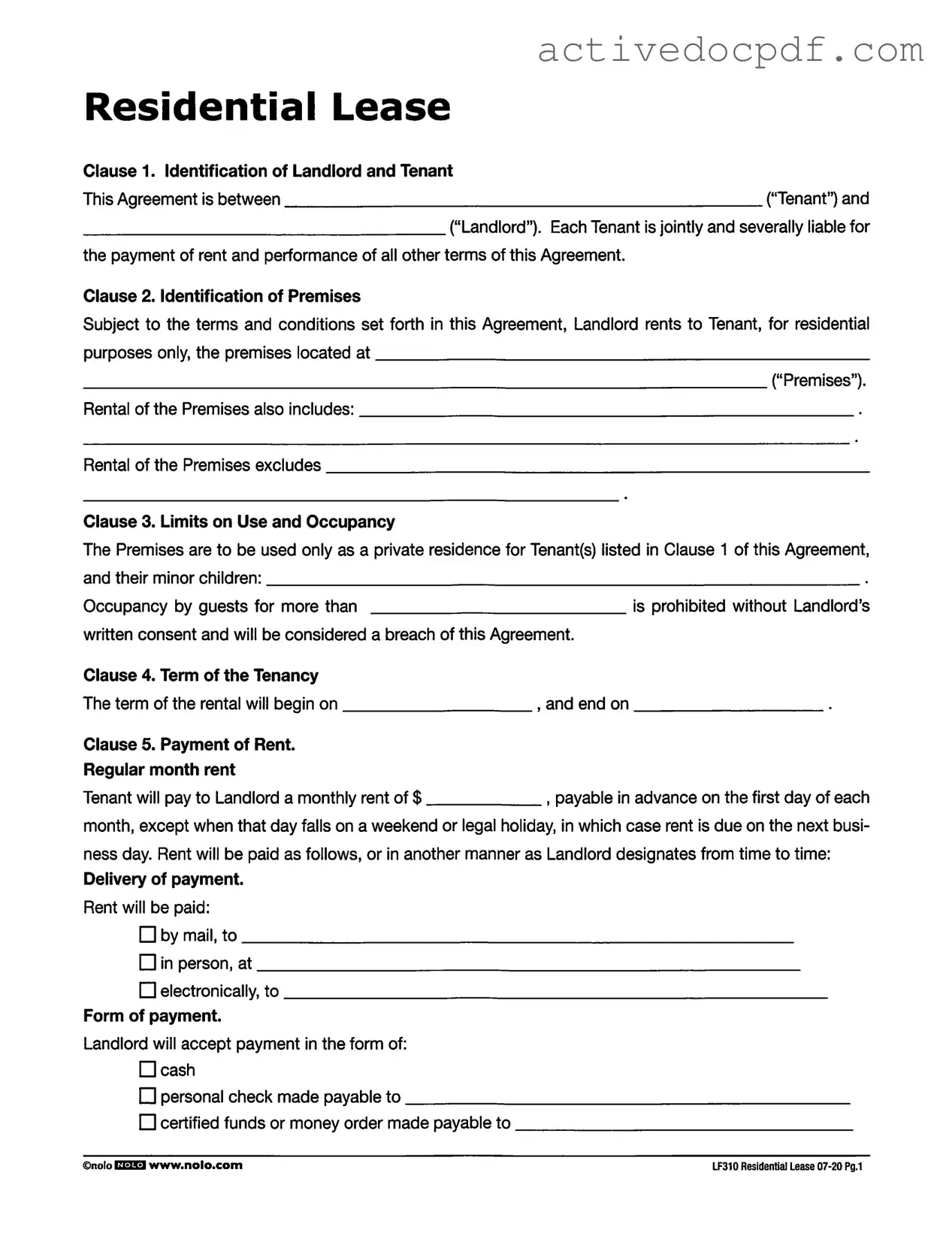The Lf310 Residential Lease form is a legal document that outlines the terms and conditions of renting a residential property. It establishes the agreement between the landlord and tenant, detailing important aspects such as rent payment, security deposits, and occupancy rules.
Who is responsible for paying rent?
According to the lease, each tenant listed in the agreement is jointly and severally liable for rent payments. This means that all tenants are responsible for the full amount of rent, and the landlord can seek payment from any one tenant if necessary.
What are the limits on the use of the premises?
The premises are to be used solely as a private residence for the tenants and their minor children. Any guests staying longer than the period specified in the lease require written consent from the landlord. Unauthorized occupancy can lead to a breach of the agreement.
How is rent paid?
Rent is due on the first day of each month and must be paid in advance. If the due date falls on a weekend or legal holiday, the rent is due on the next business day. Tenants can pay via various methods, including cash, personal checks, certified funds, or electronic transfers, as designated by the landlord.
What happens if rent is paid late?
If rent is not paid in full within the specified number of days after the due date, a late charge will be applied. The charge consists of a fixed amount plus an additional fee for each day the rent remains unpaid. However, the total late charge for any month will not exceed a certain limit agreed upon in the lease.
What is the purpose of the security deposit?
The security deposit serves as a financial safeguard for the landlord against potential damages or unpaid rent. Tenants are required to pay this deposit upon signing the lease. It cannot be used to cover the last month's rent without prior written consent from the landlord. After the tenant vacates, the landlord must return the deposit or provide an itemized statement explaining any deductions.
Can tenants sublet the premises?
Tenants are prohibited from subletting any part of the premises or assigning the lease without the landlord's written consent. Violating this clause can result in termination of the tenancy. This rule includes restrictions against short-term rentals, such as vacation stays.
